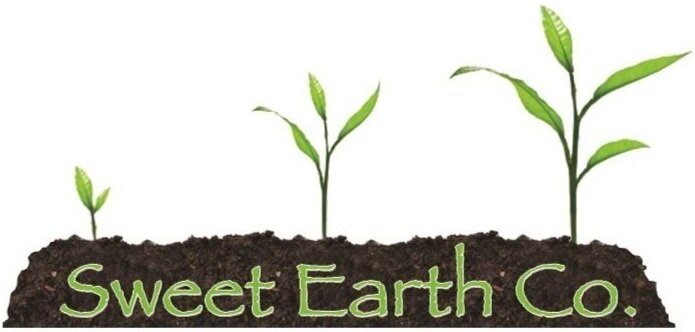Cultivating Green Dreams: An Atomic Approach to Eco-Friendly Gardening in 2024
Welcome, fellow green thumbs and flower fanatics to a new year of boundless possibilities in the garden!
As we step into a new year, we’re inspired by James Clear and his incredible book Atomic Habits (affiliate link), and want to apply his teachings to setting garden goals.
Not only will we be dreaming big, we’ll also cultivate an eco-friendly garden through small, sustainable practices.
Before you continue, grab the worksheets so you can set goals as you read this blog post.
Thinking Big, Acting Small
One thing that James Clear advocates that we agree with wholeheartedly is dreaming big when it comes to goals, but thinking small when it comes to execution.
Doing this will allow you to envision your dream garden, and then work towards creating it through small, management actions. Let’s break down that lush, vibrant, dream garden into achievable, bite-sized steps.
#1 - Mindset Makeover
Adopt a new mindset that feels both reasonable and sustainable. Embrace eco-friendly gardening practices that align with your values and resources. Whether it's replacing lawn with an eco-garden, reducing water consumption, using organic fertilizers, or planting native species, choose practices that are achievable and align with your commitment to environmental stewardship.
Mindset is important here. Just because your actions are small does not make them unimportant. In fact, small actions come together to create a patchwork of progress that makes a huge impact.
Exercise #1 — Use your Garden Goals Worksheets to write down one mindset shift that you need to make about your garden and its impact on the environment, along with 3 eco-friendly practices you can implement in your garden.
Dive more into the eco-gardening mindset in this blog post.
#2 - Micro-Goals for Macro Results
Instead of overwhelming yourself with grand plans, focus on small, actionable goals. Maybe it's assessing your landscape to identify areas where you can make ecological improvements, setting up a composting and/or rainwater harvesting system, or starting a flower patch or herb garden. These micro-goals create a cumulative effect, leading to significant, sustainable changes in your garden.
Exercise #2 — Use the Garden Goals Worksheets to set a 6 small goals to achieve in 2024 (about one every other month) that will contribute to the overall big picture of your perfect garden.
Want to learn more about eco-friendly cutting gardens? Check out this blog post.
Building Systems, Not Just Goals
James Clear urges us to set systems, not just goals, for continuous improvement. In the gardening realm, this means establishing sustainable practices that become an integral part of your routine.
#1 - The Watering Rhythm
Instead of aiming for a specific yield, focus on a watering system that adapts to your garden's needs. Install a drip irrigation system or rain sensors to optimize water usage, fostering a healthy ecosystem that conserves this precious resource. This can easily be a DIY project.
Exercise #3 — Write down in your Garden Goals Worksheets what your watering plan will be — or, if you need to do some more research first, schedule some time to do so. Putting it on your calendar makes it way more likely to happen!
#2 - Companion Planting Strategies
Create a system of companion planting to enhance soil fertility and pest control. Integrate flowers, herbs, and vegetables that work harmoniously together, reducing the need for chemical interventions and promoting a thriving, balanced garden.
Exercise #4 — Do the same thing you did above in your Garden Goals Worksheets by writing down your companion planting strategies or scheduling some time for research.
#3 - Simple & Manageable Schedule
By creating a simple and manageable schedule, you won’t be overwhelmed as you bring your garden to life. You can always start really simple and get more complex as you become more comfortable in the garden.
Keep it flexible, too. If you miss a day, catch up when you can rather than stress about following it exactly. As James Clear says, it’s okay to miss, but don’t miss twice.
Exercise #5 — Use your Garden Goals Worksheets to create a simple schedule for the following aspects of gardening:
Planting
Weeding
Watering
Fertilizing
Harvesting
The Goal-less Garden
Another thing we love that James Clear talks about is using goal-less thinking for true long-term success. In gardening, this translates to a commitment to the process — a cycle of endless refinement and continuous improvement, rather than a “set it and forget it” mindset.
#1 - Reflect and Refine
Regularly assess your gardening practices. What worked well? What can be improved? Use these reflections to refine your approach, nurturing a garden that evolves and adapts over time.
#2 - Community Connection
Engage with your local gardening community to share experiences, tips, and successes. Collaborate on eco-friendly initiatives and learn from each other's journeys, fostering a supportive ecosystem of like-minded individuals.
Check out this blog post to learn more about building community through gardening.
As we step into a new year, let James Clear's atomic approach guide us toward sustainable, eco-friendly practices. Dream big, act small, build systems, and embrace a goal-less mindset. Through this philosophy, our gardens will not only flourish but become thriving ecosystems that endure, adapt, and inspire for years to come. Happy gardening!
If you want to explore your garden goals further, and learn from us how to achieve them, check out our signature program, The Eco-Friendly Cutting Garden.


